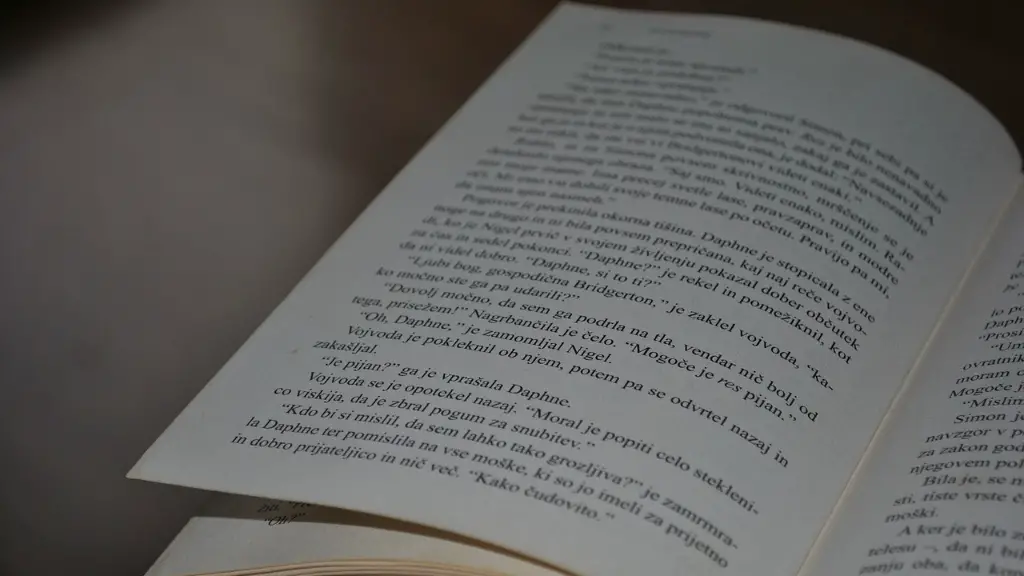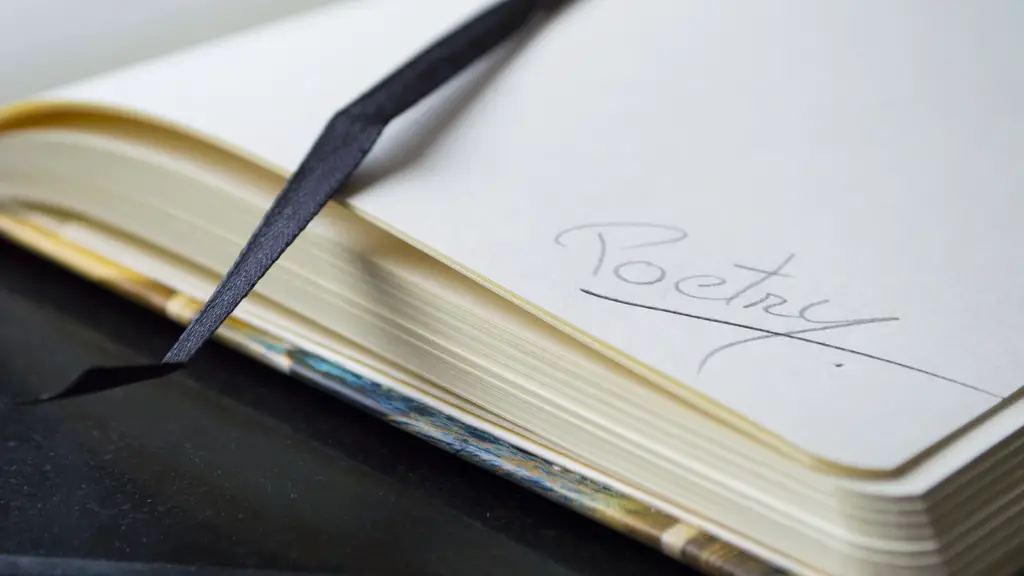Background Information
Poetry is one of the oldest forms of literature, with some of the earliest written works being in poetic form. In the modern literature classroom, poetry is both respected and often overlooked. Many people have preconceived notions about poetry that can prevent them from engaging with the form, but it is a great way for both teachers and students to explore language, meaning, and the emotion that comes with both. Introducing a poetry unit to a classroom can be daunting, but with the right preparation it can be a rewarding and educational experience for everyone.
Creating an Environment of Engagement
When introducing a poetry unit, it can be helpful to begin by establishing an environment of safety and openness. This means that the teacher has to be willing to be vulnerable, too. As an educator, you should share your familiarity and relationships with poems, and express how you interpret poems in your own life. This will help to create an environment for both you and your students that isn’t afraid of exploring and discussing poetry, or of expressing emotions or reactions to it.
Types of Poetry
In order to move beyond personal reactions, it’s important to teach the students about the elements and types of poetry. Different types of poetry like haikus, sonnets, and limericks are all structured differently, but they rely on similar creative principles and techniques. For example, haikus are composed of three lines: the first line has five syllables, the second line has seven syllables, and the third line has five syllables. Explaining the structure of these different forms is a helpful way to build a foundation for further exploration.
Student Participation
Once students understand the basics of poetry, they can begin to practice expressing their own ideas. Group readings and performances are a fun way to get the class into the poems, and encourages collaboration. It also helps to lighten the atmosphere and make the material approachable. As the students become more comfortable with expressing their own ideas, try to encourage them to start writing their own poems, as this gives them a truly intimate relationship with the subject.
Teaching Non-fiction Poems
It can also be beneficial to discuss poems that address real-world issues. This is a great way to encourage critical thinking about topics like social inequalities, or to discuss events or current topics. In some respects, this can be more challenging than discussing traditional poems, as it can be more emotionally charged, but it is also more engaging, and encourages students to examine how the opinions and emotions of poets can shape the world.
Experimental Poetry and Beyond
Finally, discussing experimental and unconventional poetry can be a thrilling exercise in creativity. Reading modern poetry can help students understand the depths and nuances of language, while also giving them the freedom to find creative solutions to problems. Allowing creative freedom can also encourage, when done right, and introducing experimental poetry in the classroom can be a great way to explore the endless possibilities of language.
Analysis and Reflection
As an educator, introducing a poetry unit offers a chance to delve deeply into the core concepts of language and emotion. Exploring it with the students requires both patience and understanding, and allows for a great deal of discussion. It also allows the teacher to reflect on and to discover the topics being discussed within the poems. This can help the teacher to develop their own empathy and understanding, and can provide insights that can be as educational for them as it is for the students.
Enhancing Connections
For many students, a poetry unit can be an outlet for conveying emotions and experiences that they may otherwise be unable to express. It can also help students to understand one another more deeply, and to connect on a more human level. Classroom discussions can be a powerful way to dive deeper into the ideas of the poems, and to help people understand one another more fully, as well as themselves.
Exploring Desires and Ambitions
Discussing and reading poetry can often lead to discussions of ambition, and of what is desired in life. It can be a powerful way to think about one’s future, and to find a clearer idea of life’s purpose. Having frank and honest conversations about these topics can bring a great deal of comfort and realization, and can help the students understand not only the words of the poem, but the desires behind them.
Interpreting Surrounding Themes
In order for a poem to have a deep and lasting impact it must have emotion and meaning that can be universally interpreted. It’s important to discuss the situations, beliefs, and values outside of the poem that can make the poem relevant to more than the author. Creating a dialogue around the poem can help students to gain a better understanding of the topics and themes found in a given poem.
The Power of Questions
One of the most powerful tools that a teacher has when introducing a poetry unit is their ability to ask questions. Asking the right questions can help to guide students to a more expansive understanding of the poem, and can help to foster critical thinking and introspection. Asking thoughtful and open-ended questions can give the students a voice, and create discussion that can come up with unique insights.
Preparing for Expression
To ensure the success of a poetry unit, the teacher should prepare their students with the tools that they need to confidently express themselves. This means not only teaching them about the various structures and themes of poetry, but also teaching them to develop their own language. Offering workshops on storytelling, music, and creative writing can be a great way to unlock their potential and help them to speak their minds.
Engaging Imagination and Creative Thinking
Exploring the nuances and qualities of poetry can often lead to greater exploration into creativity in general. Discussing poetry can open the door to improvisational and speculative thinking, which can be a great way to build a more enthusiastic engagement with the material. Having the students move outside of the bounds of what’s written and start to think about what could be expressed or explored can stimulate their imaginations.
Recognizing Experiences
Discussing poetry can also provide a great opportunity for the students to reflect on the experiences that they have had. It can be a powerful tool for self-expression, and for reliving moments, whether they be joyous or painful. Offering students a safe space to share their stories can help to create empathy and understanding in the classroom, and can be a great way to connect people on a profound level.
Finding Connections
Having the students look for connections between different poems, or even between different ways of expressing emotion can be a great way to learn more about the contents of the poems. Guiding the students towards making connections between different works of art, literature, or even other people’s experiences, can help to give the material more depth and relevance.
Discussion and Reflection
Giving the students space for reflection and discussion can be a great way to open up the material. Drawing out the themes and topics that have been touched on in the poem can help to connect them to the material, and can also help them to think about themselves, and the emotions and experiences that they carry with them.
Practicing Comprehension
Teaching the students to breakdown and analyze any poem can be a great way to encourage their understanding of the material. Practicing different exercises and frameworks for understanding a poem can help them to dig deeper and develop a more comprehensive understanding of the poem. This might involve looking at the structure and tone of the poem, or even analyzing it using an existing piece of literature.
Exploring Literary Devices
Discussing literary devices can be a great way to help students understand the contents of a poem. Working through examples of metaphor, imagery, and personification can help the students to gain a greater appreciation for the language used in the text. As a teacher, it can be helpful to provide examples and to encourage discussion that involves connecting the text with the existing world.
Creating and Composition
Having the students compose their own poems can be a great way to bring closure to a poetry unit. Working with different structures and experimenting with various forms and devices can be a great way to explore both the written language and the emotive power of poetry. It can also give the students a platform for openly discussing their understanding of various elements of the poem.




